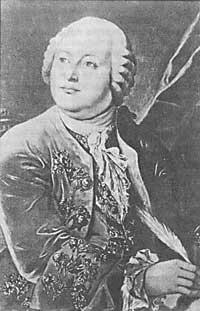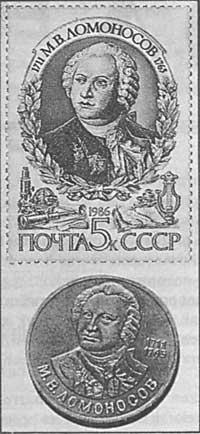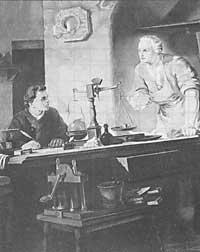Mikhail Lomonosov: Russian scientist and thinker

Mikhail Lomonosov, XVIII. He was one of the most prestigious men of the 20th century. In addition to the importance of his literary works, thanks to his scientific works, world science made a breakthrough.
Mikhail Basilievitx Lomonosov was born in Denisovka on November 19, 1711. He was the son of a fisherman and also liked to read. At 17 he moved to Moscow against his father's intentions. As the son of an aristocrat, he managed to enter an academy there.
The first years were very hard, since the State's support for students was very small. But demonstrating a great learning capacity, he advanced quickly and five years later he learned Latin, Greek, arithmetic, geography and history.
Due to his incredible progress, he was sent to Petersburg and a year later to Germany to work science (especially physics, chemistry, mineralogy and mining). He studied German and French at one of the oldest universities in Germany, specifically in Hamburg, and wrote his first literary works.
In 1741 he returned to Petersburg and did important research at his Academy of Sciences in different fields of knowledge.
As an organizer, Lomonosov was also great. The creation of the first chemical laboratory and the University of Moscow, its astronomical and meteorological observations and the organization of geographical expeditions are some of the merits of Lomonosov.
In Lomonosov the most surprising thing is the breadth of his knowledge. He founded his encyclopedism on the integration of different knowledge and the union of science and practice. As a result of this tendency to integration, he created Physical Chemistry and Mathematical Chemistry.

Many of those who have researched Lomonosov's works claim that his work can be divided into two, scientific and artistic. His scientific and literary works have a lot to do with fusion.
In his works, XVII-XVIII. Influenced by the progressive trend of 20th century science and culture.
The taste for materialistic principles is manifested in all his works. One of them, for example, was the materialistic explanation of the universe from all the natural sciences of his time. This theory contributed much to materialist philosophy.
It should also be noted the atheistic direction of his scientific and artistic works. He was against the religious-idealist conception of the universe and Mikolaj Kopernik XVI. He liked the revolutionary changes he launched in the 19th century.
He was a quick theorist and a great experiencer who combined very well. His theoretical works and the conclusions obtained through the essays were not distinguished in any case.
His preferred sciences were physics and chemistry.
His main research in the field of physics focused on heat, light and electricity. In his works he tried to clarify that the transmission of heat between bodies was a consequence of the movement of the smallest elements of matter.
In the field of astronomy he was the first to discover the atmosphere of Venus in 1761.
He also dedicated himself to inventing new tools. One of them, and the one still used, is the viscometer. He also worked on improving thermometers and created weather and navigation devices.
His work in the field of chemistry is also interesting. At first he investigated the dissolution processes: metals in acids and salts in water. But the most important works were done after the creation of his laboratory.
At this time he managed to merge the two most important areas of science, physics and chemistry.
He also worked extensively on mineralogy, geography and geology, solving the processes of formation of continents, mountains and seas. Also the origin of minerals and fossil fuels.

When Lomonosov began attending the physics courses, physics witnessed the struggle between two currents: Cartesianism and Newtonism. The need to choose between these two currents led to the creation of a new conception of physics, making some corrections in some points to the previous ones and creating new conceptions in others.
Although in the theories of Descartes and Newton the atomic hypothesis was not very important, Lomonosov realized its fundamental meaning and was one of the first to convert the atomics into scientific theory.
He contributed much to the development of Russian science by creating the first Russian grammar. Thanks to its enormous prestige among scientists, the language used in his scientific and literary works fulfilled a normative function.
Unknown in western nations, the Soviet Union is constantly exalted. His hometown, Denisovka, has been known since 1948 as Lomonosov.
Buletina
Bidali zure helbide elektronikoa eta jaso asteroko buletina zure sarrera-ontzian











